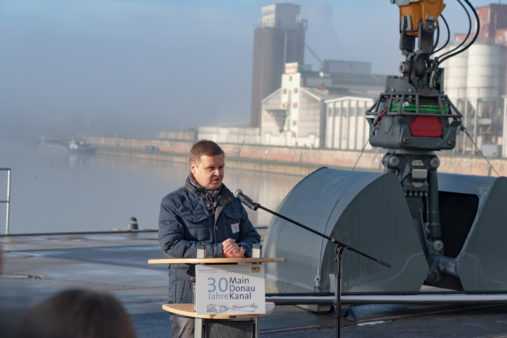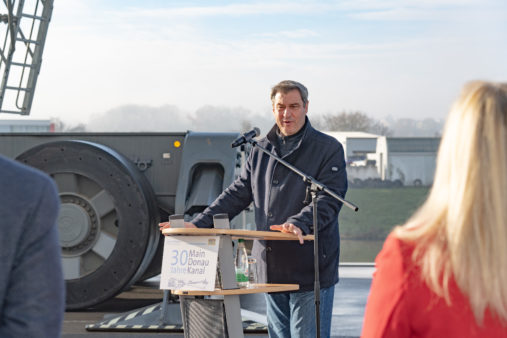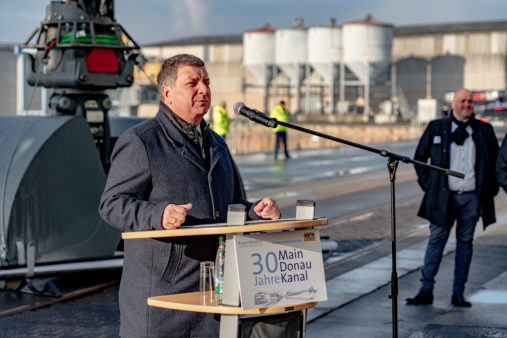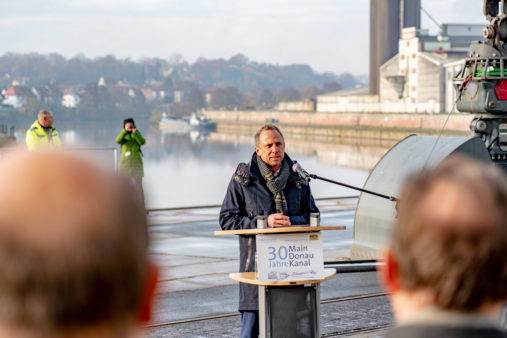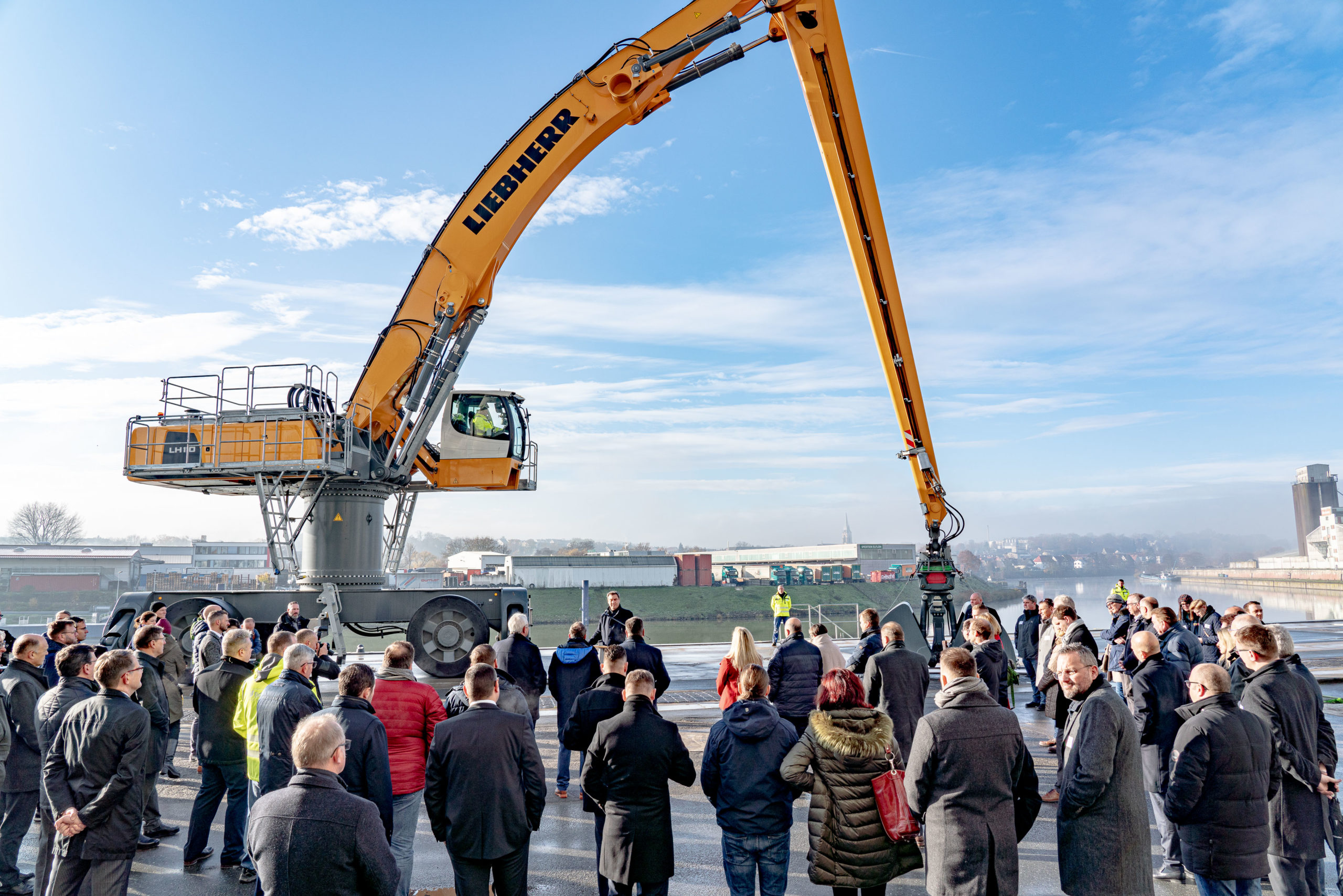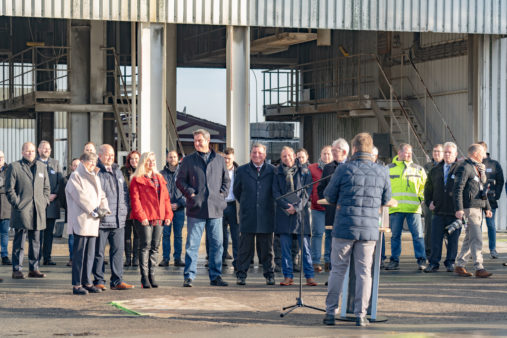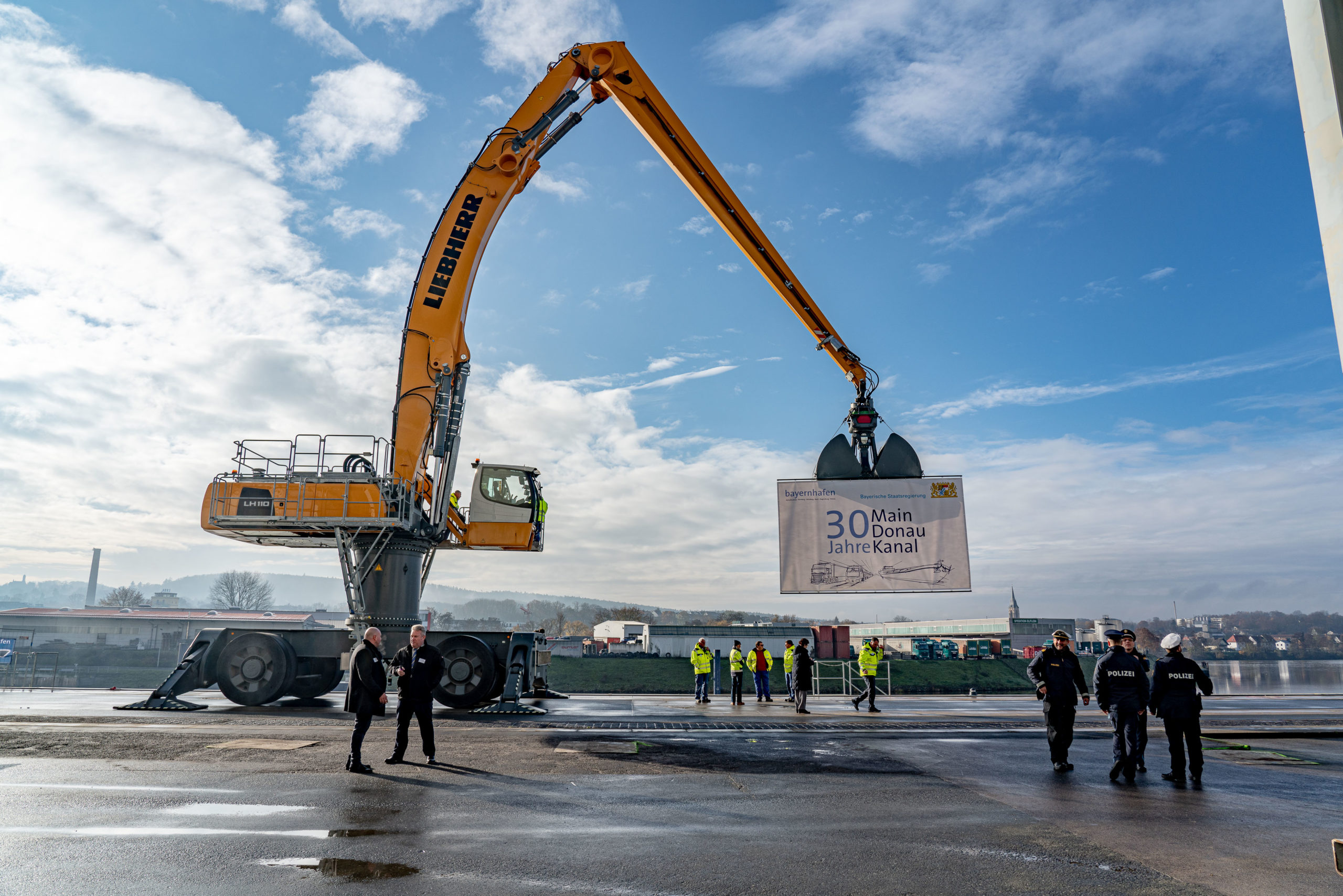25 November 2022 | Bamberg
VIP visitors flock to historic jubilee
Main-Danube Canal celebrates its 30th anniversary
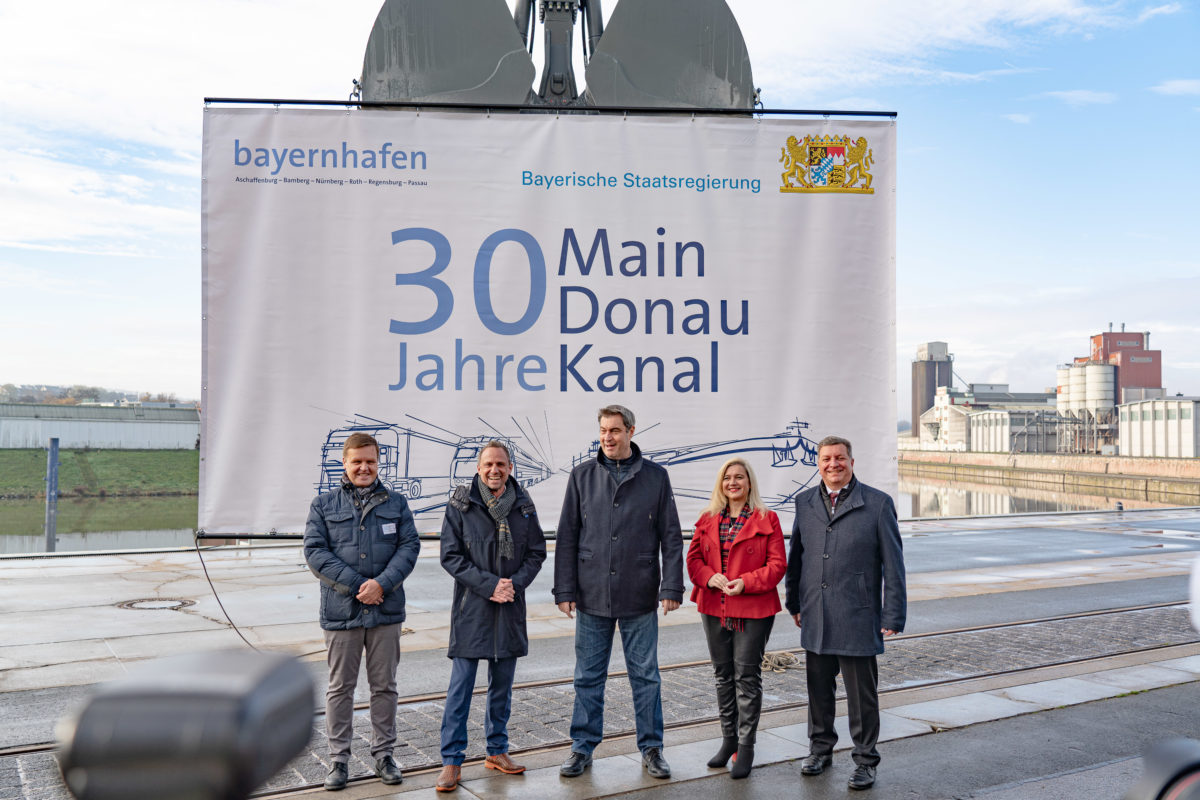
Pictured from left to right: Chief Executive Officer of bayernhafen, Joachim Zimmermann; Environment Minister Thorsten Glauber; Minister President Dr. Markus Söder; Europe Minister Melanie Huml; and Transport Minister Christian Bernreiter (image: bayernhafen/M.Ziegler).
On the occasion of the 30th anniversary of the Main-Danube Canal, hosted by the Bavarian State Ministry of Housing, Construction and Transport at bayernhafen Bamberg, Bavarian Minister President Dr. Markus Söder was joined by Bavarian Minister of Transport Christian Bernreiter, Minister of the Environment Thorsten Glauber and Minister of European Affairs Melanie Huml.
Before the search for superlatives began with the purpose of befittingly classifying the Main-Danube Canal, bayernhafen’s Chief Executive Officer Joachim Zimmermann gave all the guests an insight into just how great the importance of inland ports is today and will be in the future, thanks in part to the canal. “Our inland ports are systemically important. Their role for the economy and society is immense, as they are economic powerhouses and logistics hubs for the transportation and storage of energy and raw materials serving industry and the general public. Without them, the transport and energy transition will not be possible. bayernhafen is perfectly positioned to handle the energy sources of the future. This is where the experts in transportation, storage and distribution of all forms of energy are at home.
This port infrastructure must be maintained, safeguarded and prepared for the future. We need the optimism that was associated with infrastructure in the past. Planning reliability and accelerated planning processes are indispensable prerequisites to boost the innovation from which Bavaria will benefit over the long term. Through the intelligent networking of road, rail and inland waterway, we will be able to guarantee the reliable supply of goods for industry and the general public in the future,” said Joachim Zimmermann, the Chief Executive Officer of bayernhafen and President of the Federal Association of Public Inland Ports (Bundesverband Öffentlicher Binnenhäfen).
Bavarian Minister President Dr. Markus Söder described the Main-Danube Canal as one of Bavaria’s great lifelines and a true success story. “Our Bavarian aqueduct also plays a key role in the supply of water in the Free State. Without water transport, northern Bavaria would already be too dry for agriculture. In addition, the canal is an important economic and tourism factor in the region. We will continue to rely on the canal in the future and develop it into a central European transport and water hub,” said Söder.
Bavarian Transport Minister Christian Bernreiter specifically addressed whether a project of such dimensions would still be just as feasible today. “Yet, what was a bold vision for centuries has now been a reality for 30 years. Thanks to the Main-Danube Canal, Bavaria has become an important link connecting the economic areas along the Rhine and the Danube. Thanks to it, water transport in Bavaria is now an important factor for the economy and a considerable location advantage for local industry and commerce.”
In his speech, the Minister for the Environment, Thorsten Glauber, addressed the environmental aspects and also clearly stated the need for future investment. “Water is life. The Main-Danube Canal is of elementary importance, particularly for the water balance in Franconia. It is a key support for the water balance between southern and northern Bavaria. This water artery will continue to be an important means of combating the aridity caused by climate change in the future,” said Glauber.
Stretching 171 kilometers, the Main-Danube Canal connects the river Main at Bamberg via the river Altmühl at Dietfurt and the river Danube at Kelheim. The technically demanding project was built between 1960 and 1992 starting in Bamberg and opened to traffic 30 years ago. In addition to its importance for transportation and the economy, it also serves to balance the supply of water between the more water-rich southern Bavaria and the rather arid northern Bavaria.
Over the past 30 years, the ports between Aschaffenburg and Passau have developed into important freight hubs and cargo handling facilities for the transfer of goods between road, rail and inland waterway. Today, this multimodal transport is more important than ever to the economy and to the transport transition of the future.
One example of how the various modes of transport are excellently networked is the Port of Bamberg, one of the six bayernhafen locations. A large number of industrial and commercial companies that have settled in the port and in the region also benefit from the container terminal, which they use to import primary products and components and to export their products. Today, bayernhafen Bamberg is the most important freight traffic hub in Upper Franconia and part of the Main-Danube Canal success story. Tourism has also experienced a real upswing thanks to the river cruise ship pier at bayernhafen.

